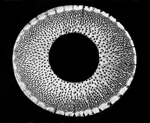|
1980s: Questionable Western Writings about 'Suizen'
Andreas B. Gutzwiller, Christopher Blasdel, Riley Kelly Lee ...
New web page first uploaded on June 4, 2024
During the 1970s, especially, and also in the 1980s, hopeful Western shakuhachi disciples literally "flocked" to Japan
aspiring to how possibly learn to play - if not even more "master"? - the bamboo flute 'shakuhachi', some way or the other.
A handful of them even made up their minds to also study and potentially qualify as academically authorized "specialists",
be that within respected university study programs such as first of all: Ethnonomusicology, in particular.
You probably know the names of some of these most prominent, admirable early Western shakuhachi pioneers, like for example:
Andreas B. Gutzwiller, Germany/Switzerland, b. 1940
Christopher Blasdel, USA, b. 1951
Riley Kelly Lee, USA, b. 1951
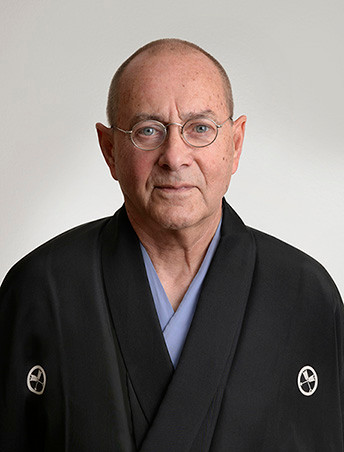
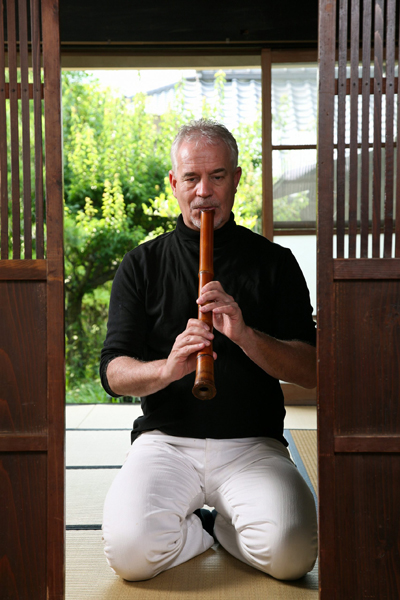
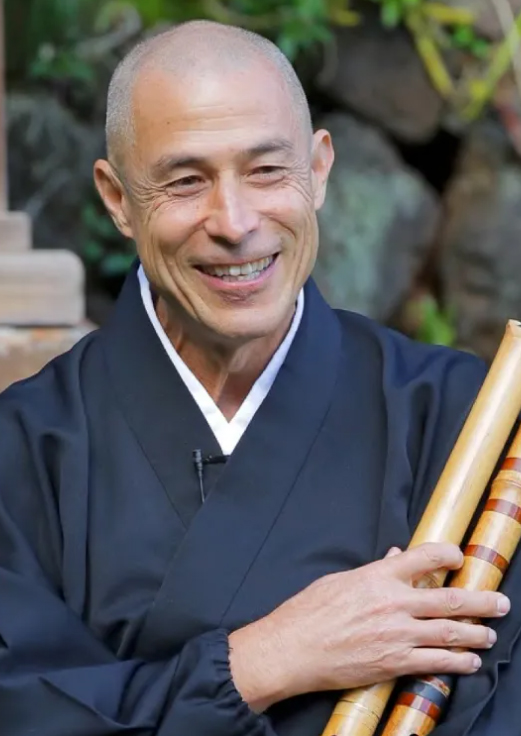
Official online website portraits as of late December, 2023:
Andreas B. Gutzwiller, Christopher Blasdel & Riley Kelly Lee
Now, as the first of these three personalities, Andreas Gutzwiller submitted his PhD thesis on the shakuhachi (authored in English) to the Weslayan University, Connecticut, USA, in 1974.
Riley Kelly Lee's MA thesis on the shakuhachi (authored in English) was submitted to the University of Hawai'i in 1986.
At this time of writing, it has so far not been possible to obtain copies of Gutzwiller's and Blasdel's first thesises but the search is continuing.
Next to this, however, also appeared in print what Andreas Gutzwiller stated in The World of Music magazine in 1984,
and what Christopher Blasdel contributed with regarding the subject 'Suizen'
in the Japan Quarterly magazine in 1984, as well.
ANDREAS B. GUTZWILLER in The World of Music, 1984:
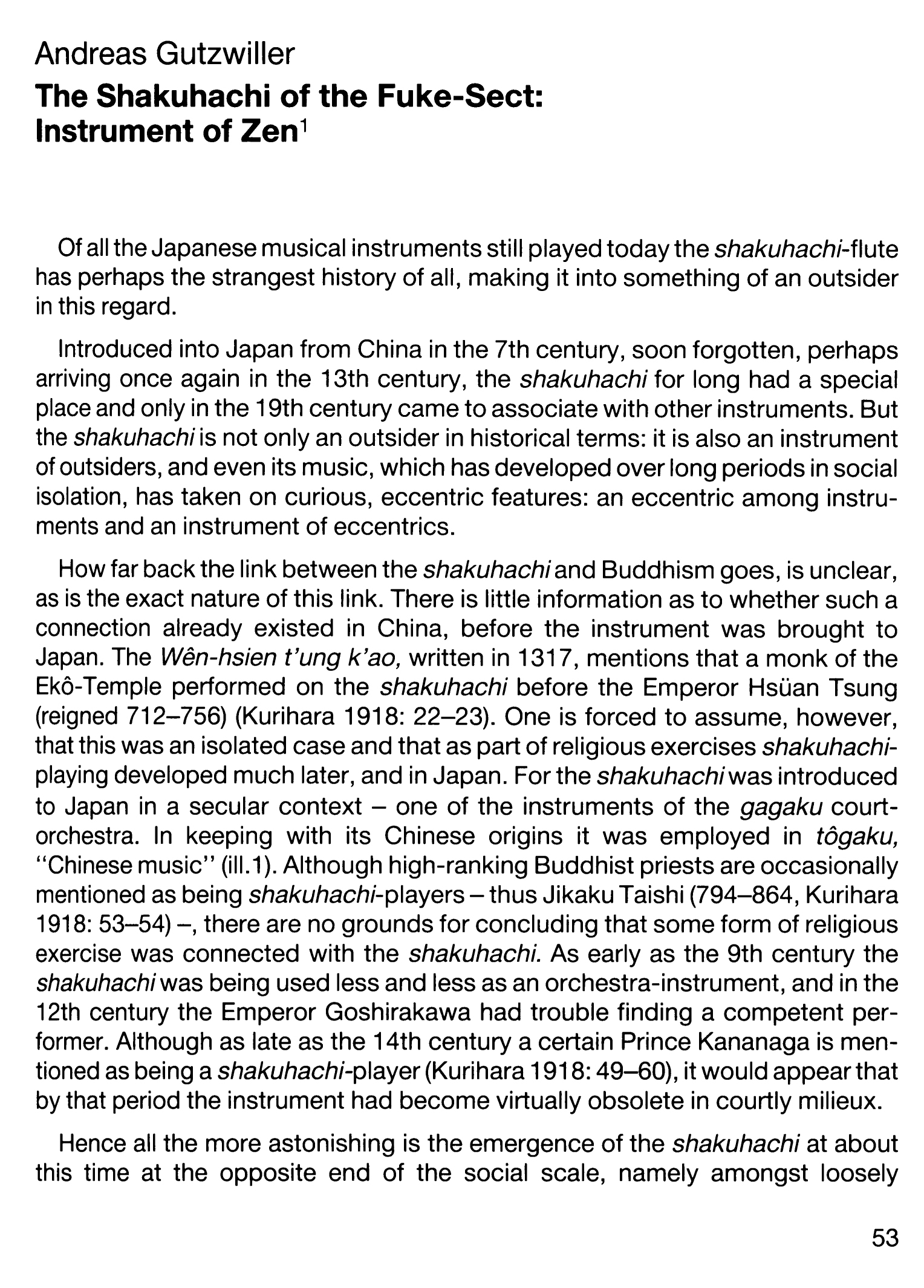
Read Andreas Gutzwiller's 1984 article here, PDF file
"The Shakuhachi of the Fuke-Sect:
Instrument of Zen."
"What, however, has been appreciated all too little is the original achievement of the komusō, which consisted in having linked
music to the practice of meditation in a unique manner."
Comment: No, no, really! - We know of nothing whatsoever in the preserved historical sources about Tokugawa Period 'komusō'
linking "music to the practice of meditation", so much less in any "unique" manner.
"The playing of the shakuhachi was likewise carried on in the temples quite apart from religious ceremonies: namely as meditative exercise.
As such it was called suizen, "breathing- or blowing-meditation", and complemented the form of meditation typical of the various Zen schools, i.e. zazen."
Comment: Likening 'komusō' shakuhachi playing during the Tokugawa Period to anything like genuine Zen Buddhist 'zazen' training and practice
is rather more an insult to that tradition, simple as that.
Source:
Andreas B. Gutzwiller: "The Shakuhachi of the Fuke-Sect: Instrument of Zen."
In: The World of Music Vol. 26, No. 3, Sacred Music II (1984), pp. 53-65 (13 pages)
Published by: VWB - Verlag für Wissenschaft und Bildung.
Links: https://www.jstor.org/stable/43561007?seq=1
https://www.jstor.org/stable/43561007
CHRISTOPHER BLASDEL in Japan Quarterly, 1984:
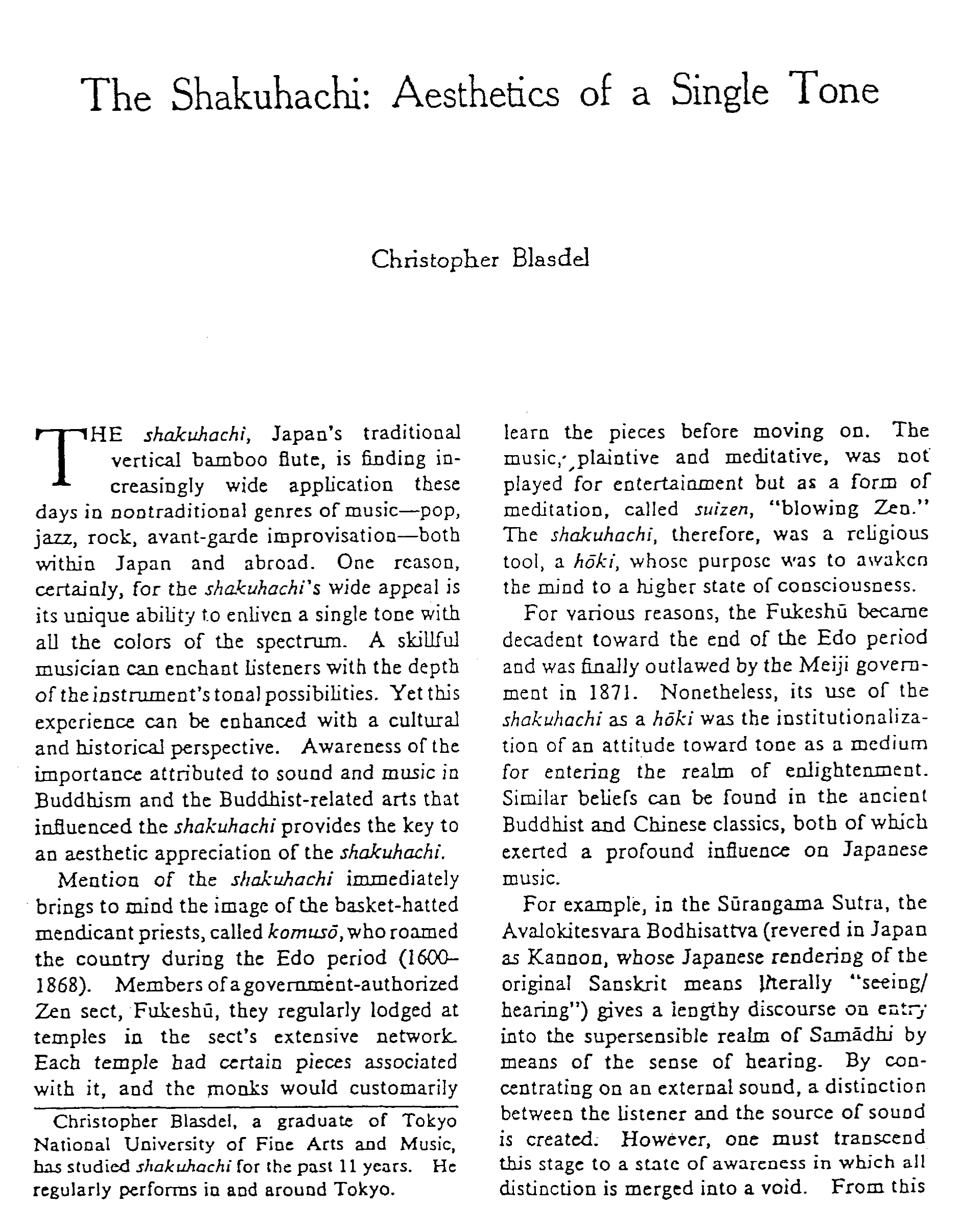
Read Christopher Blasdel's 1984 article here, PDF file
On this 1984 Japan Quarterly magazine page you can read these Christopher Blasdel words that have still no basis in historical reality,
according to existing documentary evidence:
"Members of a government authorized Zen sect, Fuke-shū, they regularly lodged at temples in the sect's extensive network."
Comment: The socalled, 'Fuke-shū', "Fuke Sect", was never a "government authorized Zen sect" and we know close to absolutely nothing concrete
and really credible about actual 'komusō' daily life and the financials and daily workings of their socalled "temples" in mid- to late Tokugawa Period society.
"The music, plaintive and meditative, was not played for entertainment but as a form of meditation, called suizen, "blowing Zen"."
Comment: There exists no documentary evidence of 'Suizen', at all - and alleged 'komusō' "shakuhachi meditation" for that matter -
before 1950 at the very earliest!
Source:
Christopher Blasdel: "The Shakuhachi: Aesthetics of a Single Tone."
In: Japan Quarterly 31, pp. 214-217, 1984.
Also published in Asahi Shinbun, April-June, Tokyo, 1984.
Link to an online PDF file:
http://shakuhachi.wdfiles.com/local--files/nav%3Aside/Blasdel.pdf
RILEY KELLY LEE in his 1986 "Blowing Zen" MA thesis:
Thought-evoking is even more what Riley Kelly Lee stated in his still yet unpublished 1986 University of Hawai'i MA thesis titled
"Blowing Zen: Aspects of Performance Practices of the Chikuho Ryu Honkyoku.":
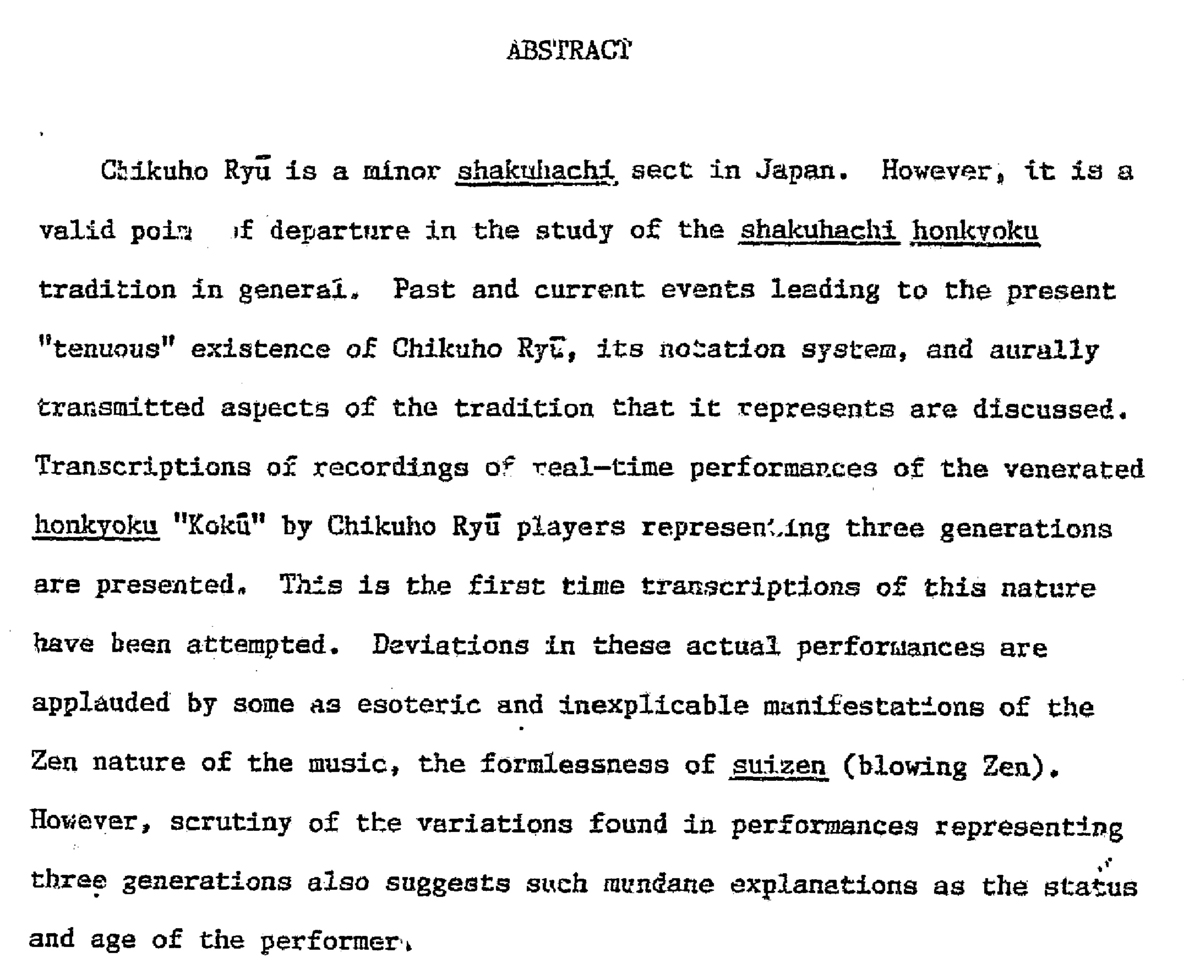
Read Riley Kelly Lee's 1986 thesis here, PDF file
Comment: This wording in the abstract is thought-provoking:
" - - - the Zen nature of the music, the formlessness of 'suizen' (blowing Zen)."
Comment: The term 'suizen' should never have been "translated" to English!
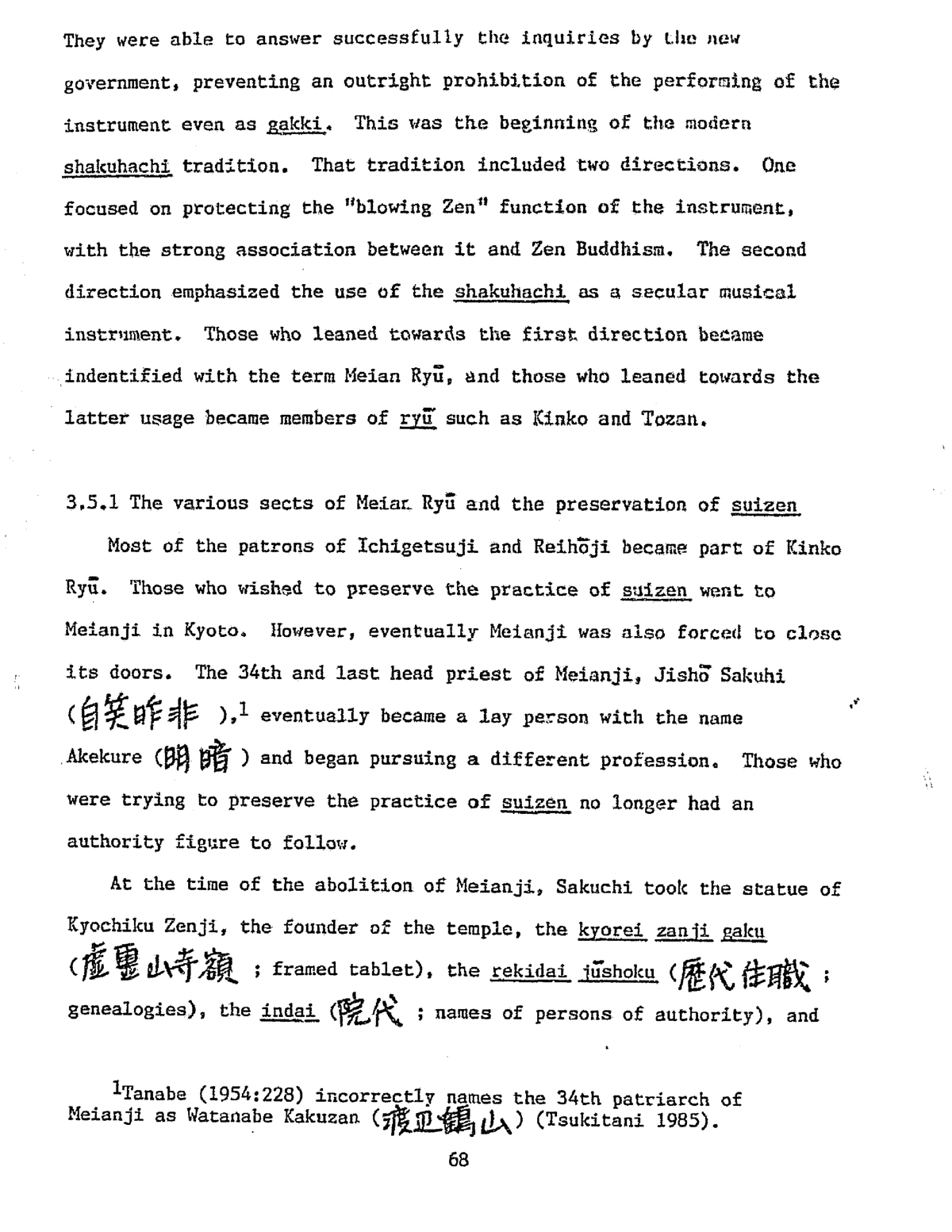
Comment: Noteworthy statements on page 68:
"The various sects of Meian Ryū and the preservation of 'suizen'."
"Those who wished to preserve the practice of 'suizen' went to Meianji in Kyoto."
Comment: In fact, there was of course no 'suizen' to preserve at Meianji, at all, because 'suizen' was only "invented" after 1950.
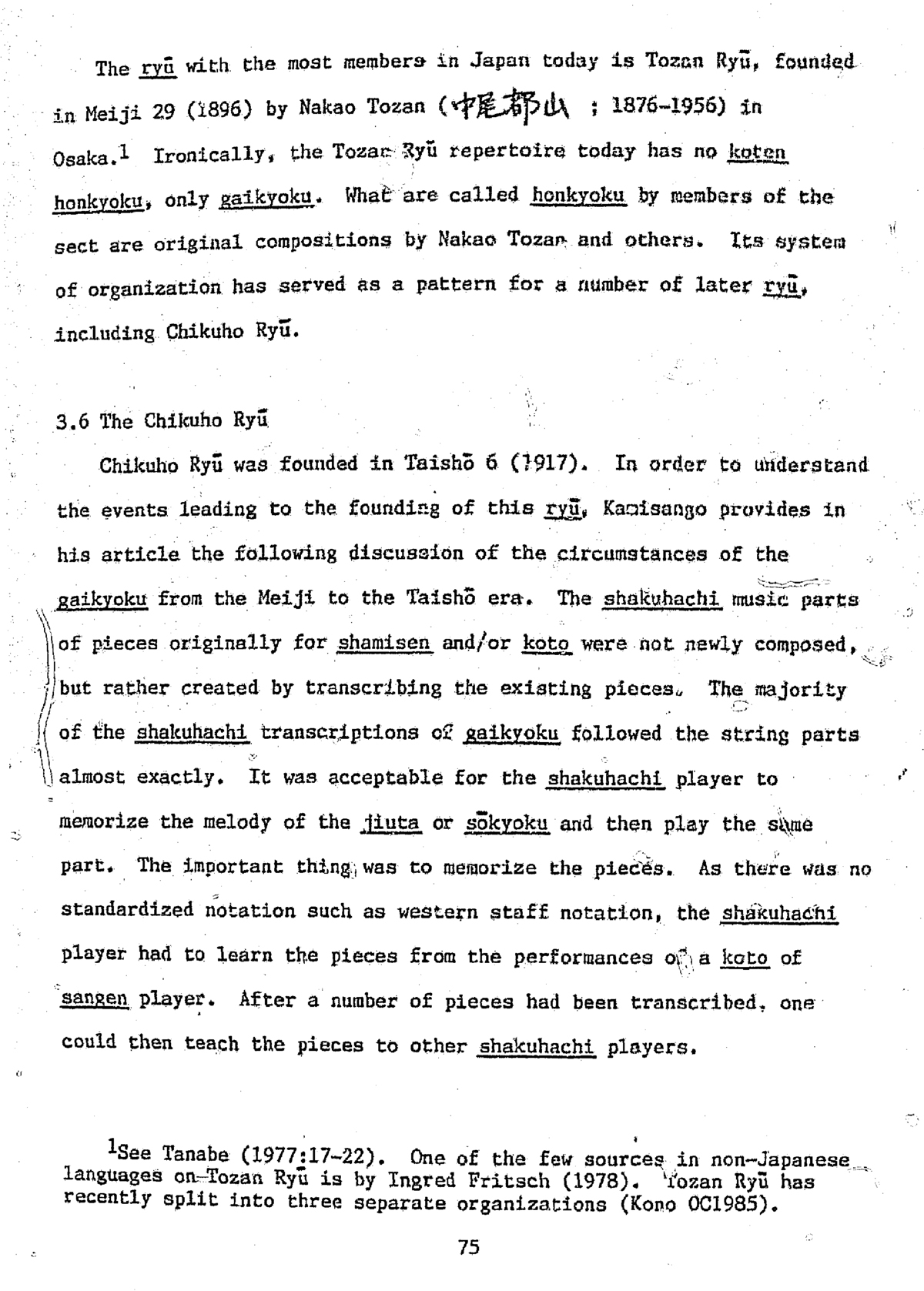
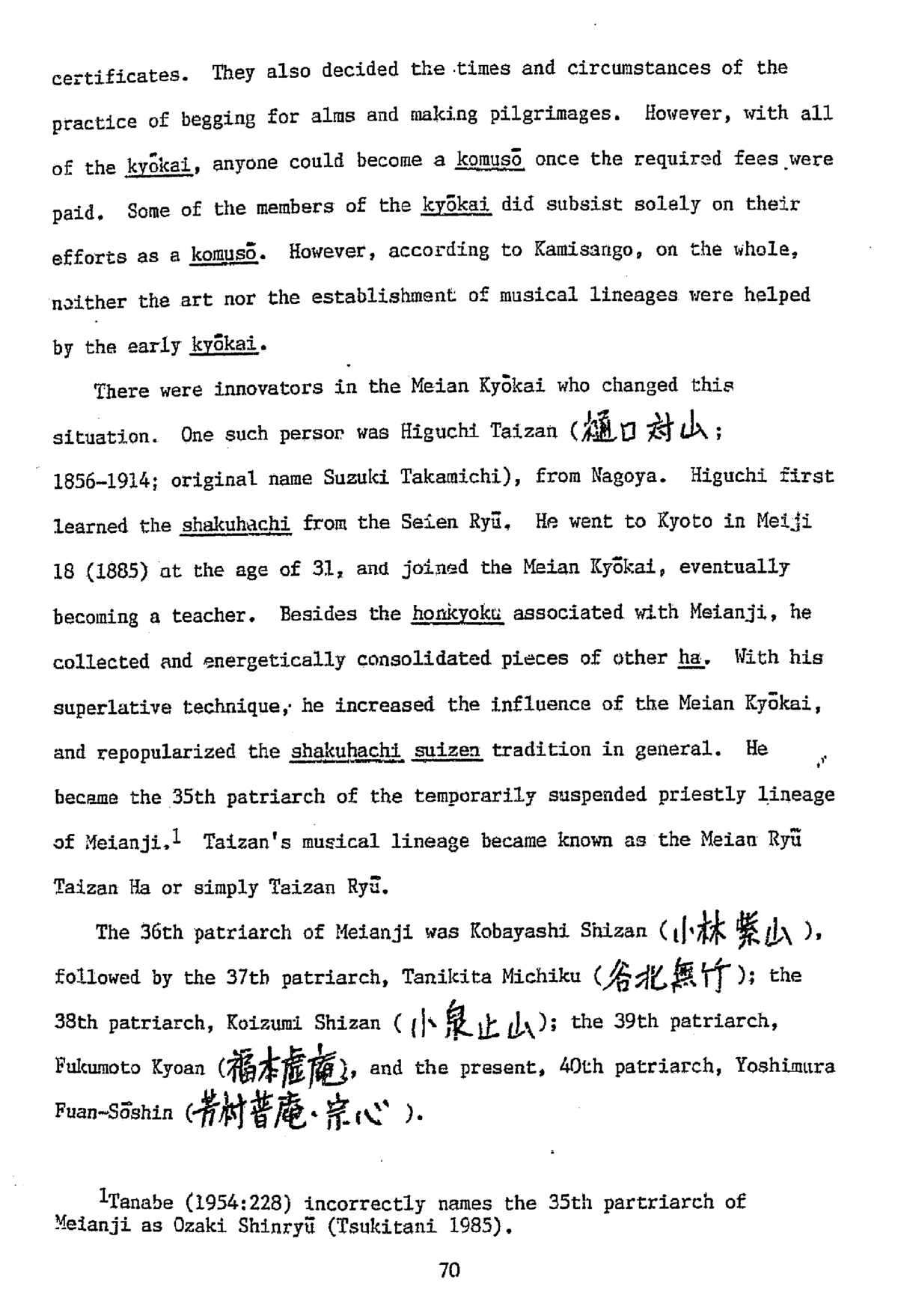
Two Statements on page 70:
[Higuchi Taizan] "increased the influence of the Meian Kyōkai,
and repopularized the 'shakuhachi suizen' tradition in general."
Comment: The issue here is, of course, that there was no 'shakuhachi suizen' tradition in existence before 1950
at the very earliest.
"He [Higuchi Taizan, ed.] became the 35th patriarch of the temporarily suspended priestly lineage of Meianji."
Comment: No, no. Higuchi as well as all his followers in that office as Myōan-ji 'kansu', "guards",
were never "priests", not ordained Buddhist monks in any capacity - only lay persons who knew how to play the shakuhachi.
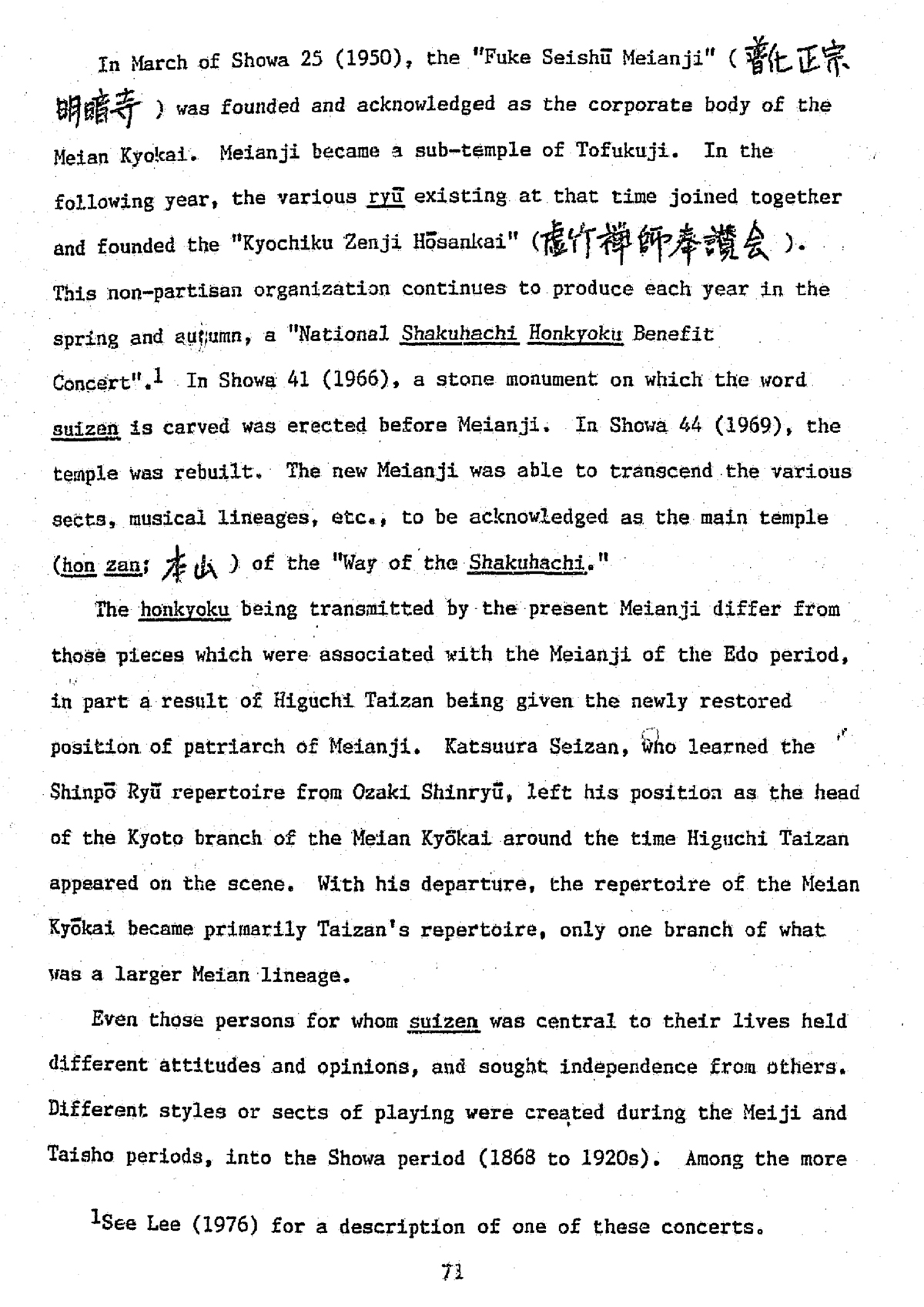
Statement on page 71:
"Even those persons for whom 'suizen' was central for their lives
held different attitudes and opinions, and sought independence from others."
Comment: No matter how those persons described their shakuhachi practices, 'suizen' did not exist before 1950!
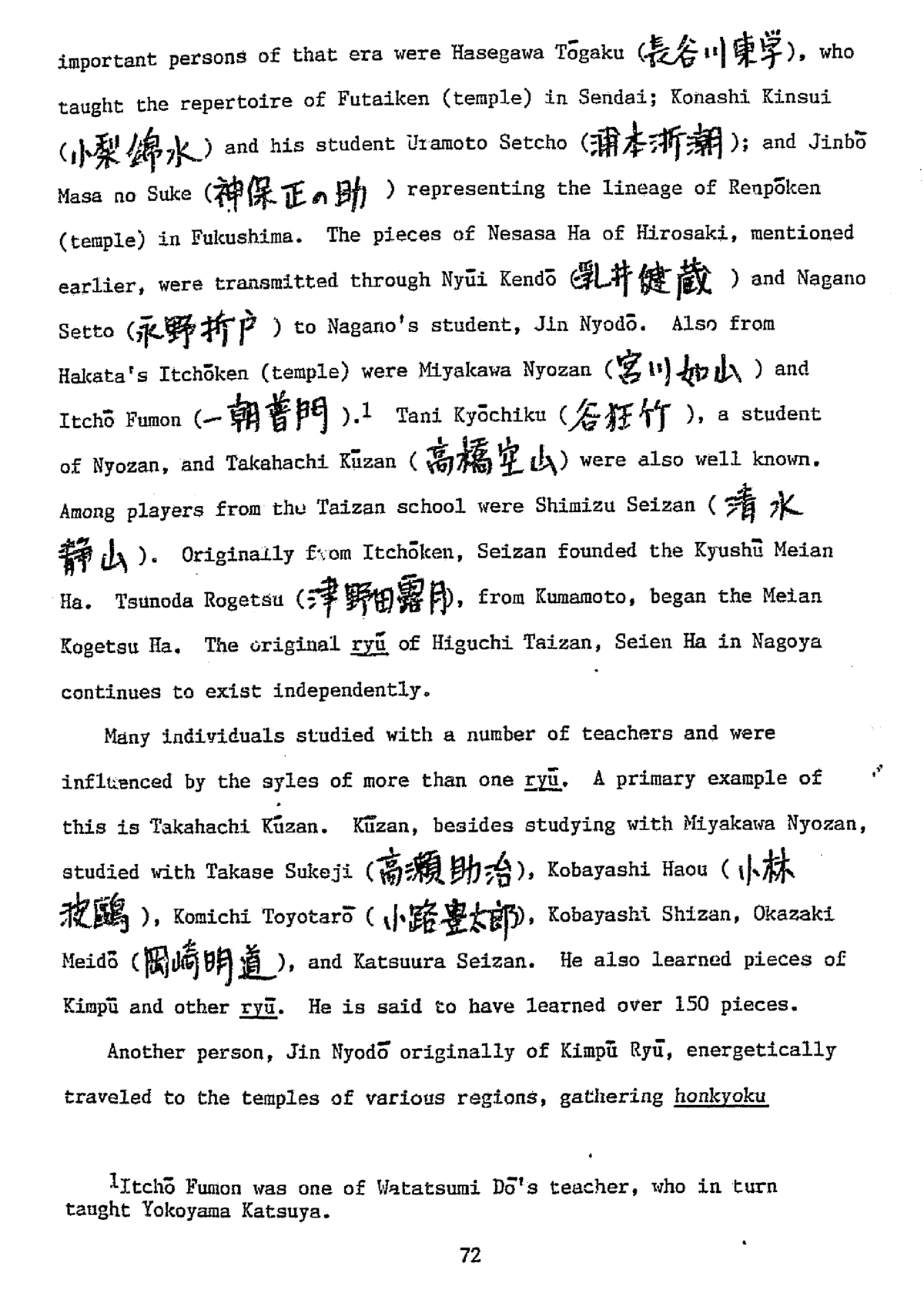
Statement on page 72:
"Most of the members of the various sects of the Meian lineage,
with few exceptions, played only 'koten' or classical 'honkyoku', i.e., 'suizen' pieces."
Comment: "'Suizen' pieces" were non-existant before 1950. Simple as that!
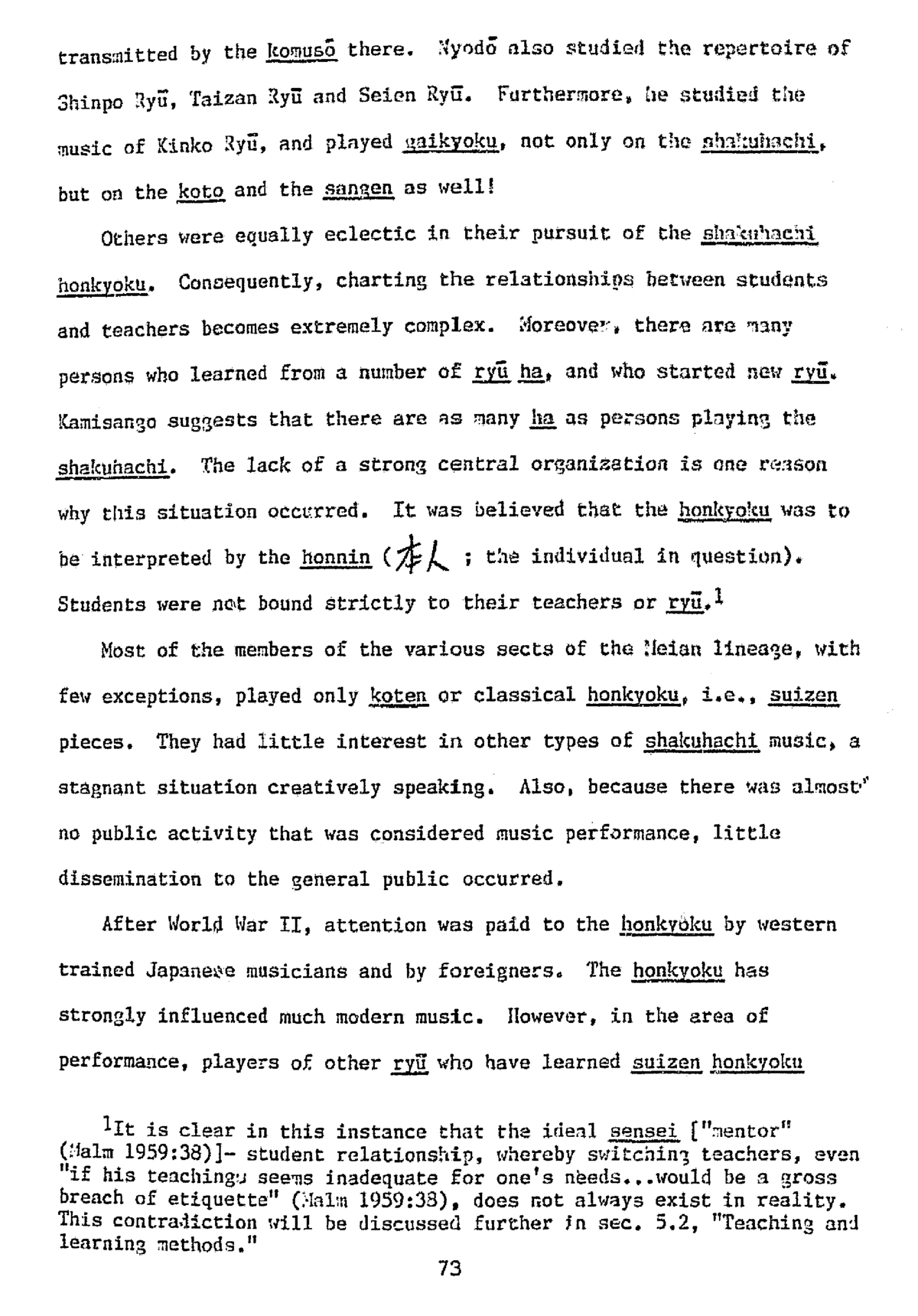
Statement on pages 73-74:
" - - - players of other 'ryū' who have learned 'suizen honkyoku'
directly or indirectly have been more active than the members of the various Meian 'ryū"
Comment: No such historical term or concept as 'suizen honkyoku' has ever been observed in any historical documentary evidence context, whatsoever.
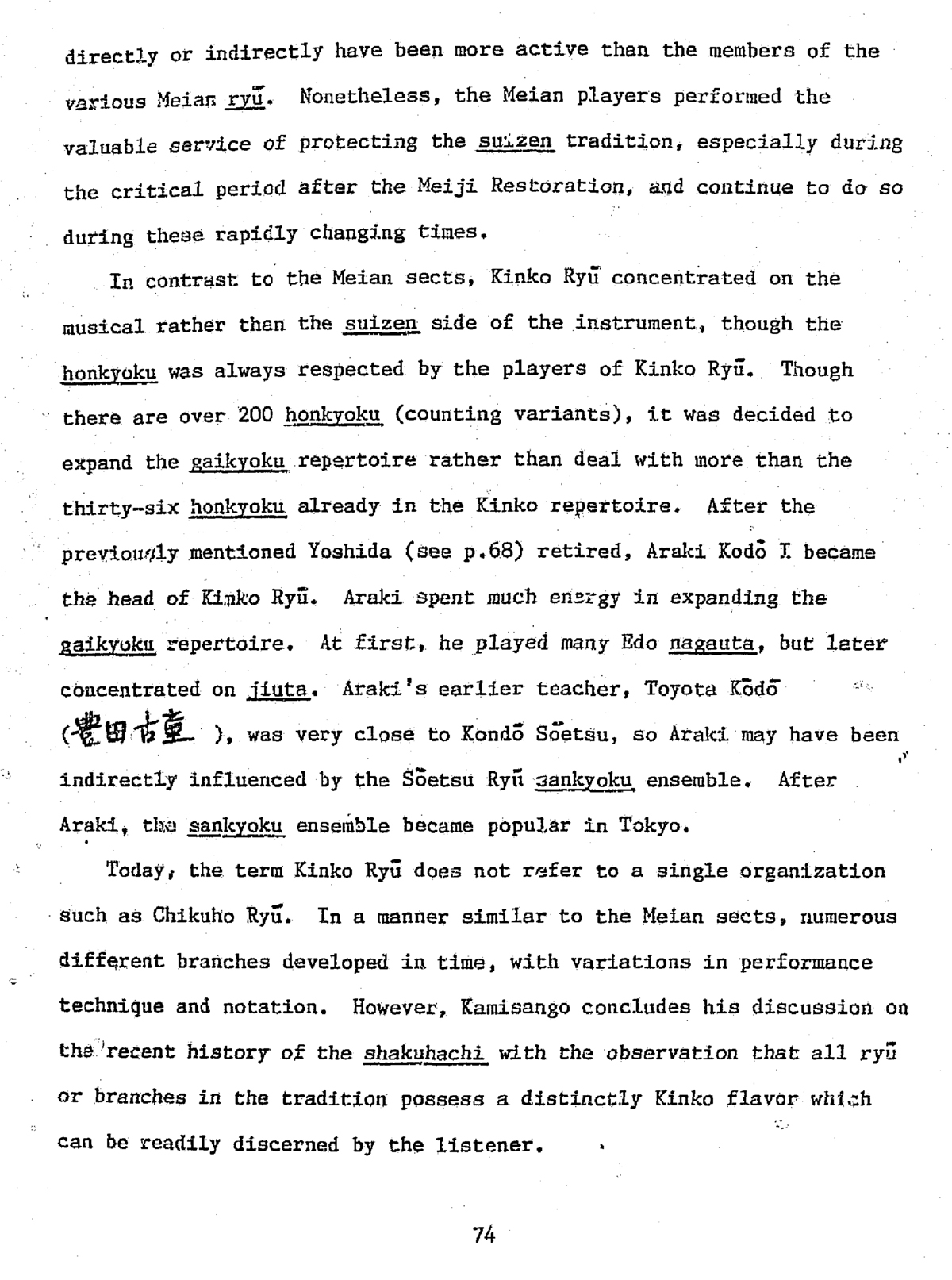
Statement on page 74:
" - - - the Meian players performed the valuable service of protecting the 'suizen' tradition,
especially during the critical period after the Meiji restoration, and continue to do so, during these rapidly changing times."
Comment: There was never anything like a "'suizen' tradition" before after the year of 1950!
Source:
Riley Kelly Lee: Blowing Zen: Aspects of Performance Practices
of the Chikuho Ryu Honkyoku.
Unpublished MA Thesis, University of Hawai'i, 1986.
Link to online version:
https://www.proquest.com/openview/b4bb0bf706b76361c41a4b800372ed74/1?pq-origsite=gscholar&cbl=18750&diss=y
|
|
